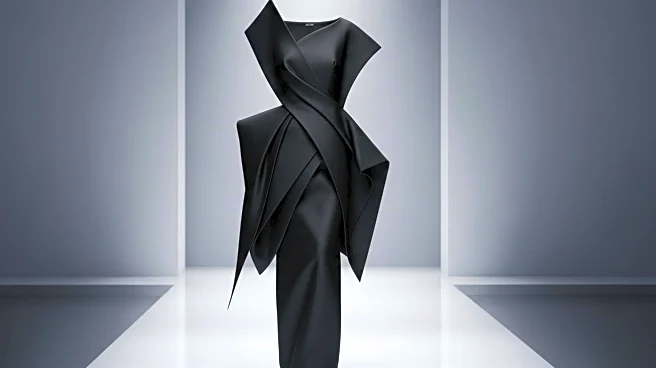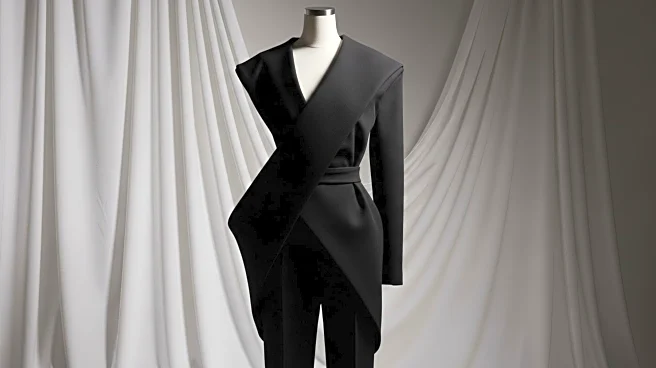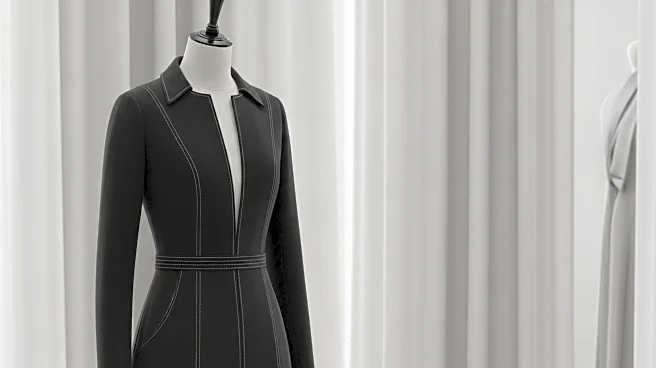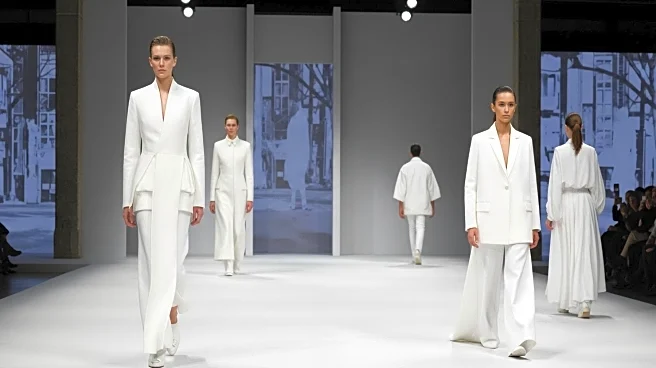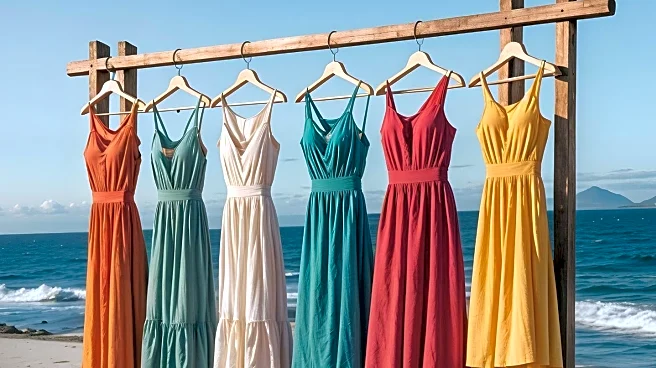What's Happening?
Yohji Yamamoto presented his Spring 2026 Ready-to-Wear collection at Paris Fashion Week, showcasing his signature style of monochrome, urban, and fluid silhouettes. The collection was marked by a tribute to the late Giorgio Armani, with two additional looks added in his honor. These included black sheaths featuring calligraphy and images from Armani's past campaigns. The show was characterized by Yamamoto's mastery of deconstruction, with minimalist shrouds and complex pleating, knotting, and draping. The collection also incorporated artistic elements, such as abstract white paint markings and fringing that resembled works by artists like Sheila Hicks and Olga de Amaral.
Why It's Important?
Yamamoto's collection not only highlights his enduring influence in the fashion industry but also underscores the interconnectedness of fashion and art. By paying tribute to Giorgio Armani, Yamamoto acknowledges the impact of fellow designers on his work and the industry at large. This gesture of homage reflects the respect and camaraderie within the fashion community, especially following the passing of influential figures. The collection's artistic elements further blur the lines between fashion and art, potentially inspiring future collaborations and innovations in design.
What's Next?
As the fashion world continues to evolve, Yamamoto's collection may influence upcoming trends, particularly in the use of monochrome palettes and deconstructed silhouettes. The tribute to Armani could inspire other designers to honor their peers, fostering a culture of appreciation and collaboration. Additionally, the artistic elements in Yamamoto's designs might encourage more designers to incorporate art into their collections, leading to a richer and more diverse fashion landscape.
Beyond the Headlines
Yamamoto's collection raises questions about the role of legacy and memory in fashion. By incorporating elements from Armani's past work, Yamamoto not only honors a peer but also engages in a dialogue about the preservation and reinterpretation of fashion history. This approach could lead to a broader discussion on how designers can balance innovation with tradition, ensuring that the contributions of past icons continue to inspire future generations.

